Tuesday Tips and Techniques from Photo Pro Sascha Janson #30
On select Tuesdays, Cameras@Lembeh Resort – the first and only dedicated photo & video center in Lembeh Strait with full time on site photo pro – will feature Tips and Techniques by Photo Pro Sascha Janson. Sascha covers everyday situations he sees or has been asked about when talking with our visiting underwater photographers, so stay tuned, Sascha will offer up a range of information to help you become better prepared for underwater photography abroad and overcome some situations that may happen on dive holidays. You never know what piece of wisdom he will impart. Interested in a photo or video course, maybe you need a flip mount holder made on our 3D printer for your new diopter (maybe you just want to see a 3D printer)? Stop into cameras@Lembeh Resort and Sascha can set up time to assist you in capturing the best images possible.
This Week’s Tip: How to Photograph ‘Hairy Shrimps’
Finding the tiniest of critters isn’t easy, and photographing them takes underwater photography to a whole new level. It can be very frustrating and needs a lot of patience but it is also very rewarding when you get a great shot of something that shows fascinating details which you cannot possibly see with the naked eye.
Here are some tips on how I find and photograph one of my favorite super-macro creatures, the tiny hairy shrimp (Phycocaris simulans):
Note: All the images in this post were shot without strobes, only LED lights were used – when shooting with strobes you will use different settings!
The hairy shrimp, which is just a few millimeters in size (much smaller than a grain of rice!) is relatively common here in Lembeh, and can be found sitting on algae, seagrass, hydroid sticks, tunicates and sometimes even can be seen in pairs or small groups.
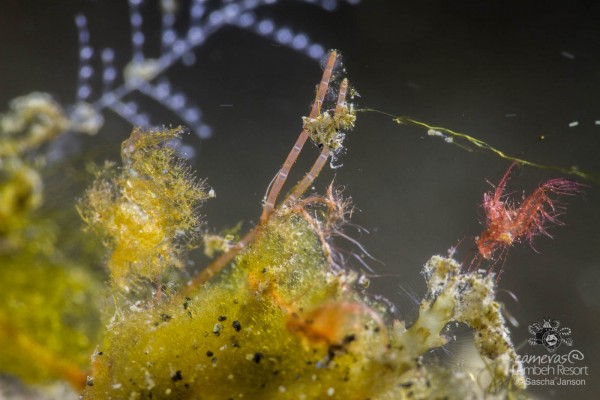
A pair of hairy shrimps, image taken with Canon 7D, 60mm macro lens, SubSee+10 f11, 1/125sec, ISO160 (no crop)
Normally they’re found in places which are elevated a bit, for example on a hydroid stick, and this makes your task easier. They come in a variety of colors, ranging from red to green, yellow, orange and white.
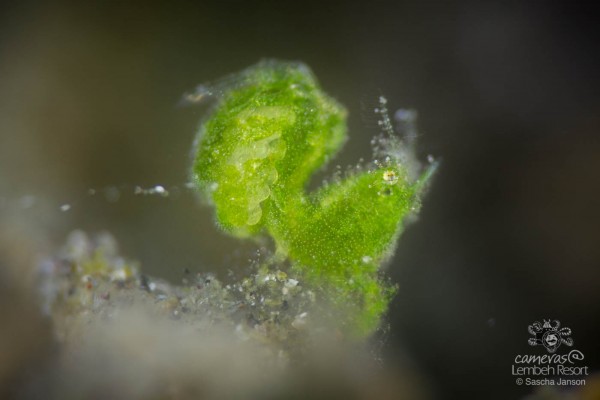
Green shrimp, image taken with Canon 7D, 60mm macro lens, SubSee+10 f5.6 (I don’t suggest shooting super macro with a wide aperture – but in this case it worked), 1/200sec, ISO160 (image cropped)
For getting the most out of an image we need to use macro lenses like a SubSee or SMC (there are other options as well) and some people even stack multiple lenses on top of each other to make the tiny guys appear as large as possible. The least frustrating method of shooting super macro is to use manual focus, on DSLRs with macro lenses (best use a 100/105mm lens, but 60mm lenses work as well) we go to 1:1 ratio and then slowly get closer to the subject and when the eye of the shrimp is in focus, take the shot. Visually speaking, hairy shrimps ‘pop’ most when photographed from the side – then we get the whole shrimp in focus (when shooting super macro the depth of field is very narrow, even when shooting with small apertures).
The eyes of hairy shrimps are very interesting, being encircled by a series of 9 lines radiating outwards, like spokes of a wheel.
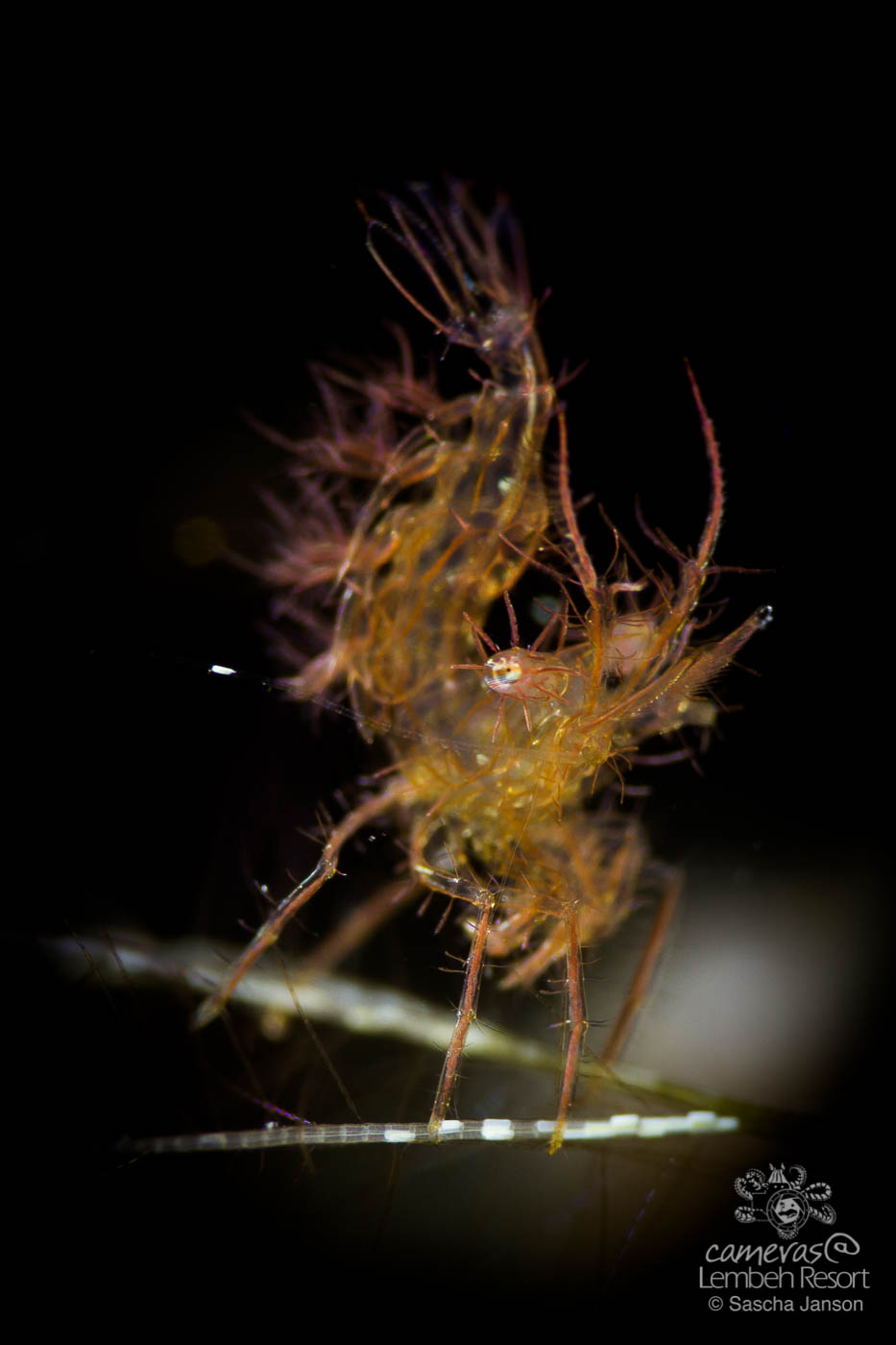
Hairy shrimp, image taken with Canon 7D, 60mm macro lens, SubSee +10, f8, 1/200sec, ISO 160 (vertical crop)
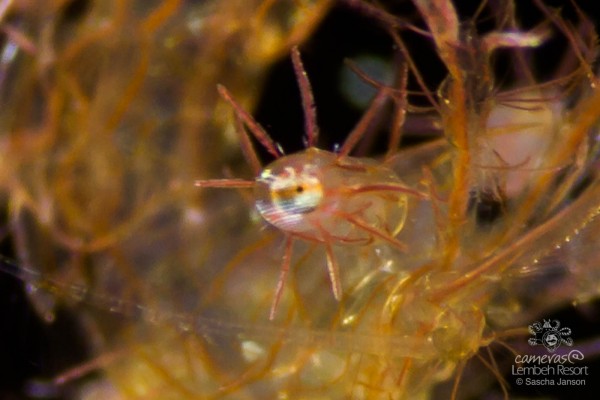
eye close-up of the same shot
Their ‘feelers’ are also extraordinarily long, several times the length of the actual shrimp’s body, and again this is a detail which is only visible thanks to the power of macro lenses. You may also be lucky enough to photograph one which is carrying a clutch of eggs, another detail best appreciated in a good macro photograph. The eggs are best visible when the subject is back-lit, as in this photo:
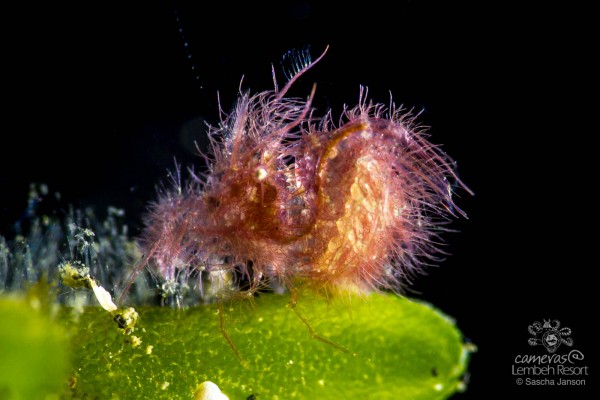
Hairy shrimp with eggs – back-lit, image taken with Canon 7D, 60mm macro lens, SubSee +10, f10, 1/500sec, ISO 160
The light coming from the back gives a nice effect even when the shrimps don’t carry eggs – it makes the hairs stand out more
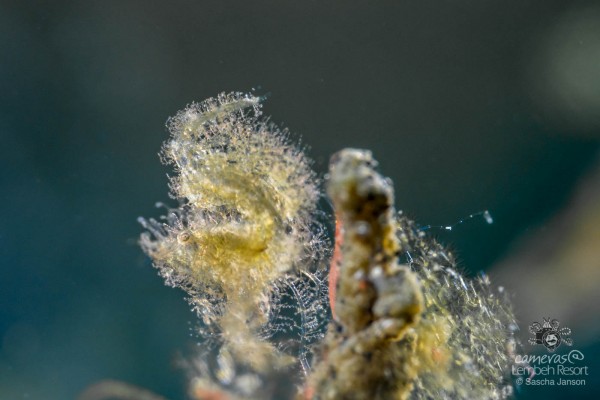
Greenish Hairy shrimp back-lit (one LED light from the front left, one from the back right), image taken with SONY A7RII, 90mm macro, Nauticam SMC, f11, 1/200sec, ISO800 (no crop)
Since the subjects are so small, it often is not enough to fill the frame with a basic macro setup and extra diopter on top – doing a vertical crop often looks nice and helps get rid of unwanted background
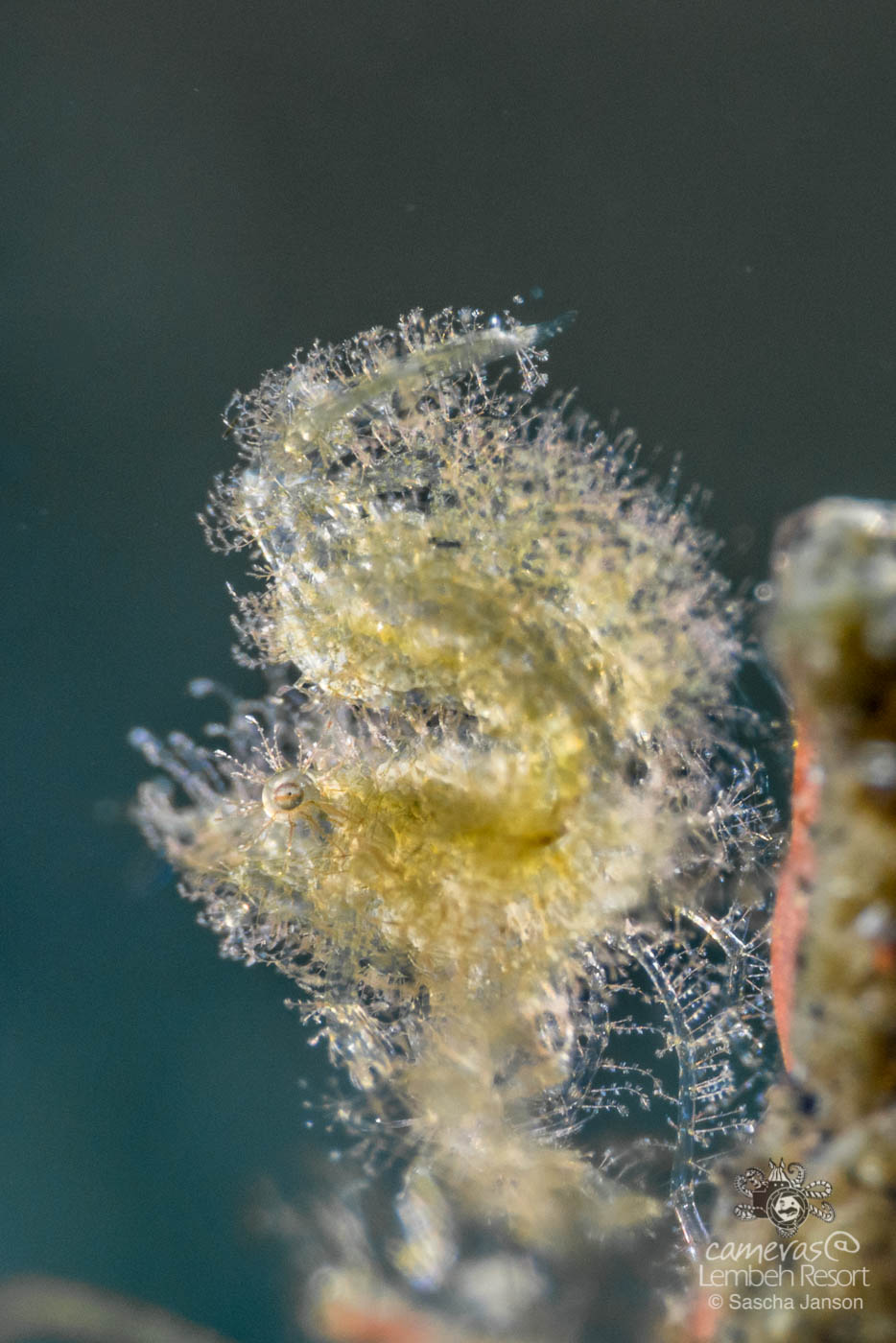
Same image as above, vertical crop
Behaviorally speaking, these shrimp are pretty tolerant of photographers and not too skittish. If you get too close they will hop away but usually only a short distance and you will be able to continue photographing the subject if you can find it again!
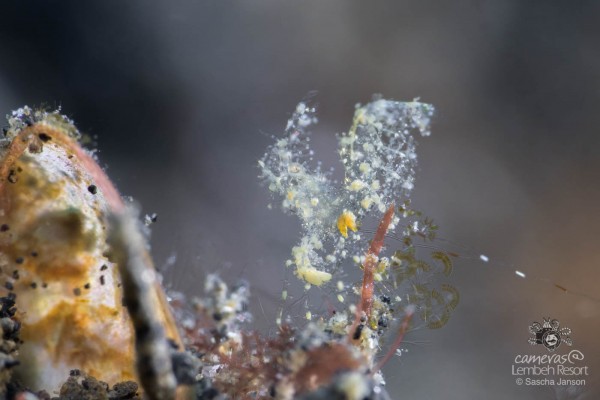
Greenish white Hairy shrimp, image taken with SONY A7RII, 90mm macro, Nauticam SMC, f13, 1/125sec, ISO800 (no crop)
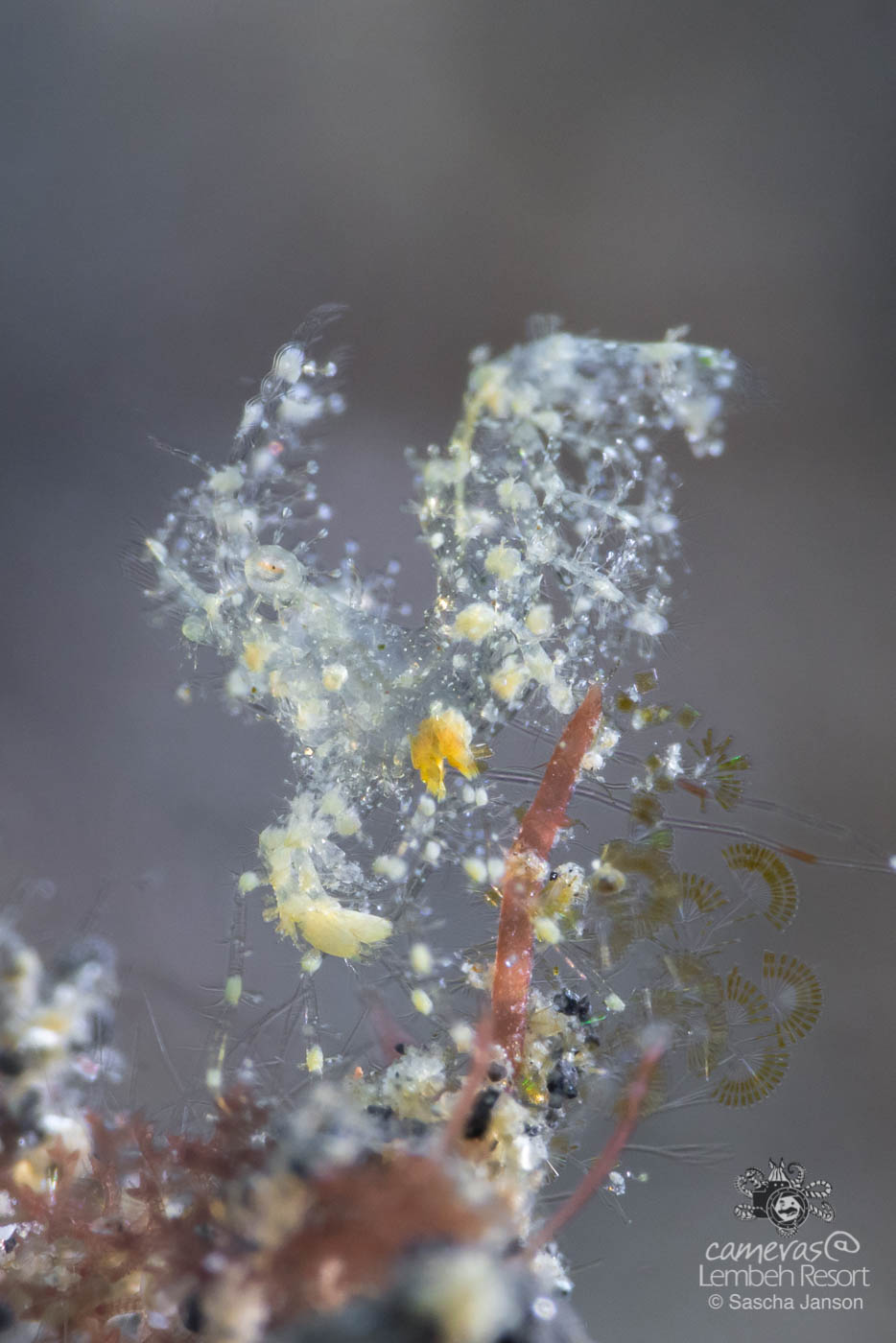
Same image as above, vertical crop
Again, to make it clear – all the above images were taken with LED lights only, when shooting with strobes you will use different settings for shooting hairy shrimps.
Recommended settings for shooting super macro with strobes are:
DSLRs: fast shutter speed (1/160sec or faster), small aperture (f22 or smaller), low ISO number (ISO 160 or lower)
Point&Shoot/Compact cameras: fast shutter speed (1/500sec or faster), small aperture (f8), low ISO number (ISO 200 or lower)
Mirrorless systems: fast shutter speed (1/160sec or faster), small aperture (f18 or smaller), low ISO number (ISO 200 or lower)
Stay tuned for more Tuesday Tips & Techniques



